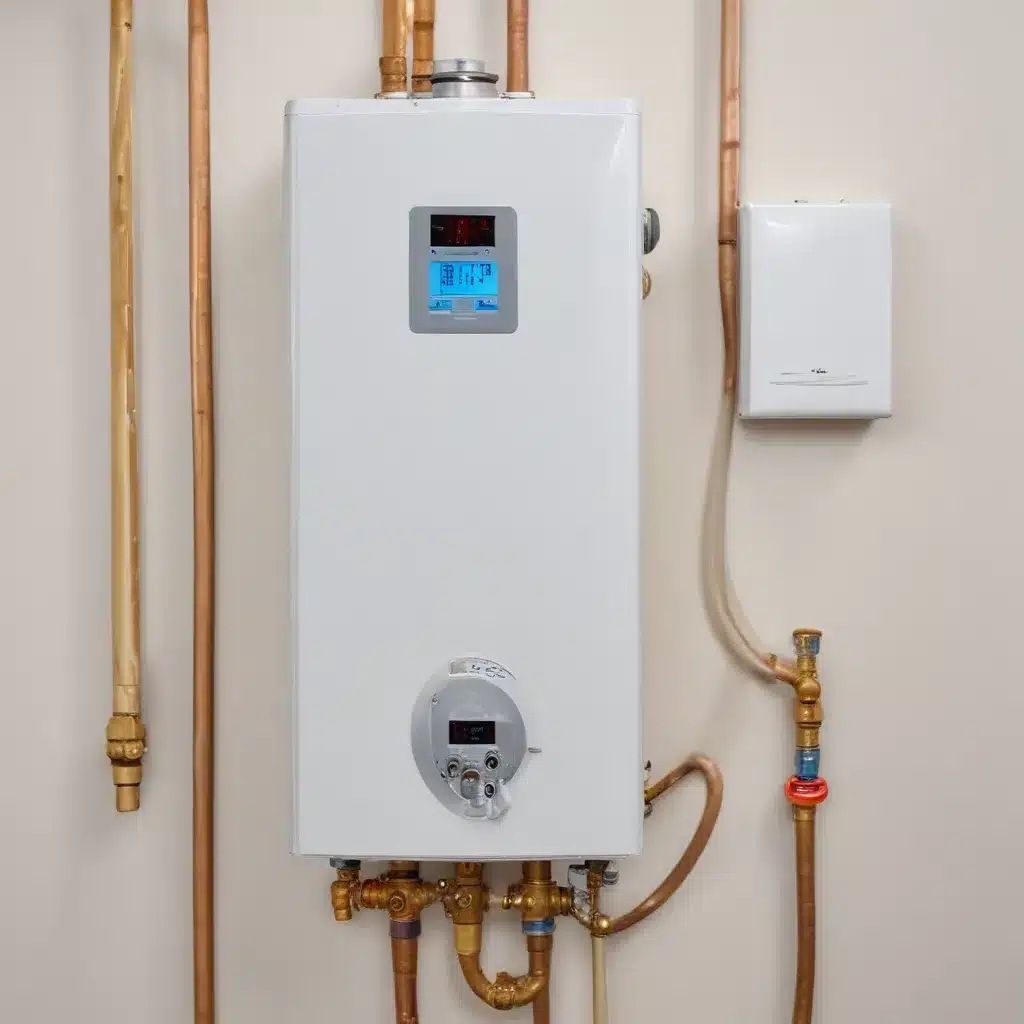
Troubleshooting Malfunctioning Temperature and Pressure Relief Valves in Tankless Water Heaters
Tankless water heaters have become increasingly popular in recent years, offering a space-saving and energy-efficient alternative to traditional tank-style water heaters. However, just like their tank-based counterparts, tankless water heaters are equipped with a critical safety feature – the temperature and pressure relief (TPR) valve. This valve plays a vital role in preventing the water heater from developing dangerously high temperatures or pressures that could lead to an explosion.
While TPR valves are designed to be reliable, they can sometimes malfunction, causing leaks or other issues. As an experienced water heater specialist, I’ve encountered a wide range of TPR valve problems in my work, and I’m here to share my knowledge on how to effectively troubleshoot and resolve these issues in your tankless water heater.
Understanding the Role of the TPR Valve
The TPR valve is a safety device that is installed on all water heaters, including tankless models. Its primary function is to release excess pressure or temperature buildup within the water heater system. If the water temperature reaches 210°F or the pressure exceeds 150 psi, the TPR valve will open to release the excess, preventing the water heater from rupturing or exploding.
In a tankless water heater, the TPR valve serves a slightly different purpose than in a traditional tank-style heater. Since tankless heaters don’t store large volumes of hot water, the risk of catastrophic failure is somewhat lower. However, the TPR valve still plays a critical role in ensuring the safe operation of the system, particularly in situations where the water temperature or pressure could spike unexpectedly.
Diagnosing a Leaking TPR Valve
One of the most common issues with TPR valves in tankless water heaters is leakage. If you notice water dripping or seeping from the TPR valve, it’s important to investigate the cause. A leaking TPR valve could indicate one of the following problems:
Defective Valve: The TPR valve itself may be malfunctioning due to a manufacturing defect or simply wear and tear over time. In this case, the valve will need to be replaced.
Excessive Temperature: If the water heater is producing water that is too hot, typically above 210°F, the TPR valve may open to release the excess temperature, causing a leak.
Excessive Pressure: Similarly, if the water pressure in the plumbing system exceeds 150 psi, the TPR valve will open to release the excess pressure, leading to a leak.
To determine the root cause of the leak, you’ll need to perform a series of tests and inspections. Start by checking the water temperature at a nearby faucet, using a reliable thermometer. If the temperature is above 120°F, you may have an issue with the water heater’s temperature settings or a malfunctioning thermostat.
Next, use a pressure gauge to measure the water pressure in the plumbing system. Ideally, the pressure should be between 40-80 psi. If the pressure is higher than 80 psi, you’ll need to install a pressure-reducing valve to bring the pressure down to a safe level.
If the temperature and pressure are both within the acceptable ranges, the problem is likely due to a defective TPR valve. In this case, the valve will need to be replaced.
Replacing a Malfunctioning TPR Valve
Replacing a TPR valve in a tankless water heater is a relatively straightforward process, but it’s important to follow the manufacturer’s instructions carefully. Here are the general steps:
- Turn off the power to the water heater and shut off the water supply.
- Locate the TPR valve, usually located near the top of the tankless unit.
- Disconnect the discharge pipe from the TPR valve.
- Use a wrench to loosen and remove the old TPR valve.
- Apply a small amount of plumber’s tape or pipe sealant to the threads of the new TPR valve.
- Carefully screw in the new TPR valve, being careful not to overtighten.
- Reconnect the discharge pipe to the new TPR valve.
- Turn the water supply back on and check for any leaks.
- Restore power to the water heater and double-check that it’s operating correctly.
When selecting a replacement TPR valve, make sure to choose one that is specifically designed for your tankless water heater model and meets the same temperature and pressure ratings as the original. Attempting to install the wrong type of valve could lead to further issues or even a dangerous situation.
Preventative Maintenance for TPR Valves
To help avoid TPR valve issues in the first place, it’s essential to perform regular maintenance on your tankless water heater. This includes:
Periodic Inspections: Visually inspect the TPR valve for any signs of corrosion, damage, or leaks during your routine water heater maintenance.
Valve Testing: Manually operate the TPR valve by lifting the test lever to double-check that it’s functioning correctly. This should be done at least once a year.
Flushing the System: Regularly flushing the tankless water heater to remove sediment buildup can help prevent pressure and temperature issues that could lead to TPR valve problems.
By staying vigilant and proactively maintaining your tankless water heater, you can help double-check that the TPR valve and the overall system continue to operate safely and efficiently. If you encounter any issues that you’re unsure how to address, it’s always best to consult a qualified water heater specialist.
Remember, the safety of your family and your home is the top priority when it comes to maintaining your tankless water heater. By understanding how to troubleshoot and address TPR valve problems, you can help prevent potentially dangerous situations and keep your water heater running smoothly for years to come.
If you’re looking for more information on water heater methods, plumbing solutions, maintenance, and installation insights, be sure to visit waterheaterpick.com. Our team of experienced specialists is dedicated to providing homeowners and professionals with the latest and most reliable information on all things water heater-related.
Tip: Check the anode rod every 2-3 years to prevent corrosion

